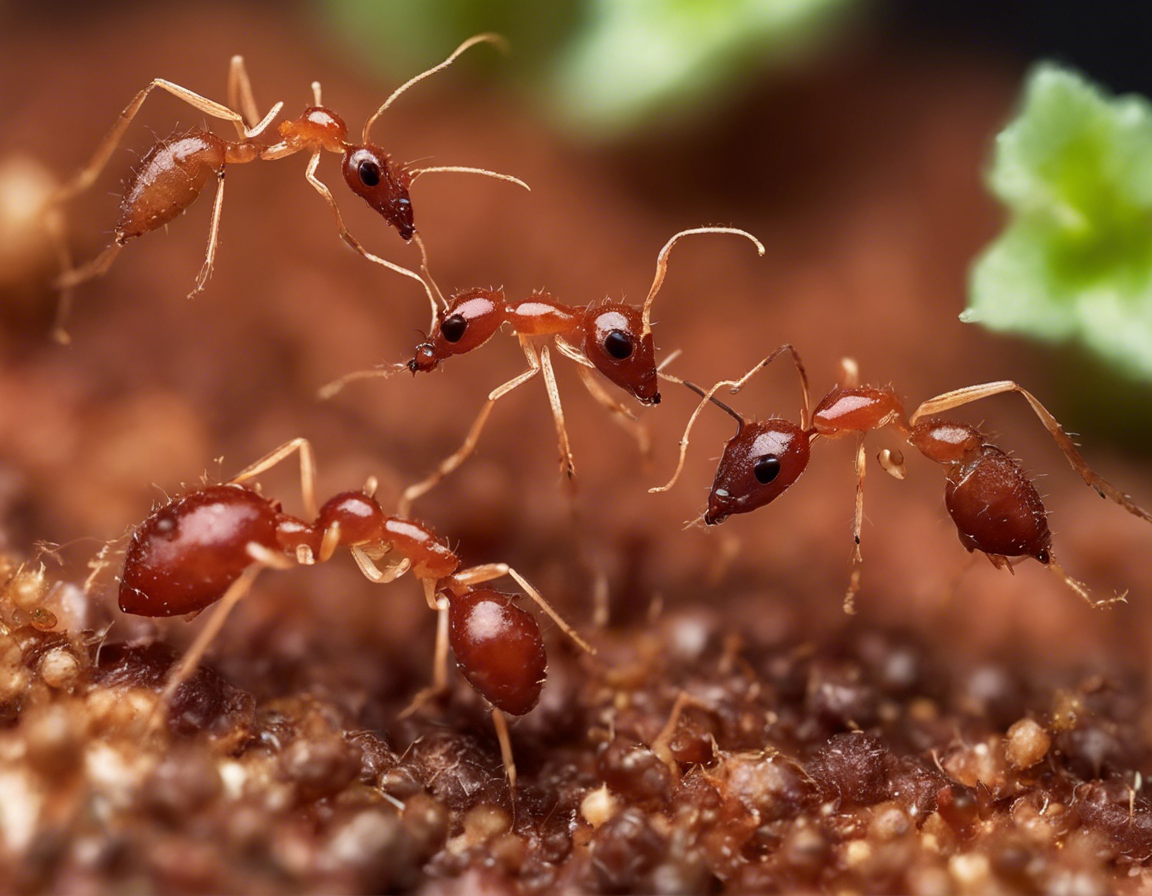With their painful stings and aggressive nature, fire ants can quickly become a nuisance in homes, gardens, and recreational areas. These invasive pests are known for their painful stings that can cause allergic reactions in some individuals. One common place where fire ants can infest is a dispensary, a place where people go to obtain medical marijuana or other cannabis products. If fire ants infest such an area, it can pose a significant threat to the health and safety of both employees and customers.
Identifying Fire Ants
Before taking any action, it is crucial to correctly identify whether the infestation is indeed caused by fire ants. Fire ants are reddish-brown in color and usually measure around 1.6 to 5 mm in length. They build large, dome-shaped mounds in soil or near structures, and their stings can cause a burning sensation along with the development of a white pustule.
Why Do Fire Ants Infest Dispensaries?
Fire ants are attracted to places that offer them shelter, moisture, and food sources. A dispensary can provide an ideal environment for fire ants to thrive due to the presence of organic matter like spilled plant material, sugars, and proteins. Additionally, the warmth and humidity often found in dispensaries can further attract these pests.
Risks of a Fire Ant Infestation in a Dispensary
An infestation of fire ants in a dispensary poses various risks, including:
- Stings: Fire ant stings can be painful and cause discomfort to individuals working or visiting the dispensary.
- Health Hazards: Some people may be allergic to fire ant stings, leading to severe reactions that require immediate medical attention.
- Product Contamination: Fire ants can contaminate cannabis products, leading to health concerns and potential legal issues for the dispensary.
- Damage to Property: Fire ants can cause damage to the structure of the dispensary if left unchecked, leading to costly repairs.
Dealing with a Fire Ant Infestation in a Dispensary
Addressing a fire ant infestation in a dispensary requires a comprehensive approach that combines identification, prevention, and control methods. Here are some steps to effectively deal with a fire ant infestation:
-
Professional Inspection: Hire a pest control professional to conduct a thorough inspection of the dispensary to determine the extent of the infestation and identify the ant species involved.
-
Sanitation: Maintain a clean and clutter-free environment in the dispensary. Regularly clean spills, dispose of trash promptly, and store food items in airtight containers.
-
Sealing Entry Points: Seal any cracks, crevices, or gaps in the building structure that could serve as entry points for fire ants.
-
Eliminate Food Sources: Remove any food crumbs, spills, or decaying organic matter that could attract fire ants.
-
Biological Control: Introduce natural predators of fire ants, such as nematodes or certain species of birds, to help control the population.
-
Chemical Control: Use insecticides labeled for fire ant control, following the instructions carefully to ensure the safety of employees and customers.
-
Regular Monitoring: Implement a monitoring program to track the effectiveness of control measures and detect any reinfestation early.
Frequently Asked Questions (FAQs) about Fire Ant Infestations in Dispensaries
-
Can fire ants cause damage to cannabis plants in a dispensary?
Fire ants do not typically feed on plants but may disturb the soil around them. However, their presence can still pose risks to the health and safety of individuals in the dispensary. -
Are there natural ways to repel fire ants from a dispensary?
While natural repellents like diatomaceous earth or peppermint oil can deter ants to some extent, a professional pest control approach is often necessary to effectively eliminate an infestation. -
How quickly can a fire ant infestation spread in a dispensary?
Fire ants are known for their rapid reproduction rates, so an infestation can spread quickly if left unaddressed. Early detection and prompt action are crucial in controlling their population. -
Are fire ant stings dangerous to individuals with allergies?
Yes, fire ant stings can cause severe allergic reactions in some individuals, leading to symptoms like difficulty breathing, swelling, and dizziness. Such cases require immediate medical attention. -
Can fire ant infestations be prevented in a dispensary?
Implementing good sanitation practices, sealing entry points, and regular monitoring can help prevent fire ants from infesting a dispensary. Engaging with a pest control professional for preventive measures is also recommended.
The presence of fire ants in a dispensary is not only a nuisance but also a potential threat to the health and safety of those present. By identifying the signs of an infestation early and implementing effective control measures, dispensary owners can ensure a pest-free environment for employees and customers alike. Working proactively to prevent fire ant infestations is key to maintaining a safe and sanitary dispensary environment.



